The 6 Hidden Triggers of Burnout
- It’s not just about working too much. Discover the six true causes of burnout (triggers of burnout) that high-achievers overlook and learn how to disarm them before they drain your performance.
- Read Time: 10-15 min
- Intro
- Beyond the Hustle: Why Stress Isn't the Real Problem
- The Six Burnout Triggers You Can’t Afford to Ignore
- Trigger 1: Work Overload
- Trigger 2: Lack of Control
- Trigger 3: Insufficient Reward
- Trigger 4: Breakdown of Community
- Trigger 5: Unfairness
- Trigger 6: Values Conflict
- Reader Reflection: Pinpointing Your Personal Triggers

Author
Tenzin Tserang
Peak Performance Coach
Introduction: The Unseen Forces Draining Your Drive
You feel it, don’t you? That creeping exhaustion that a weekend off can’t fix. The cynicism that’s starting to color your work. The secret reason your focus collapses mid-afternoon isn’t just stress or a need for more caffeine—it’s a sign that hidden forces are leading you toward burnout. Most professionals believe burnout is simply the result of working too hard for too long. But that’s only a fraction of the story.
The truth, discovered by pioneering psychologist Christina Maslach, is that burnout is rarely about the workload alone. It’s a deeper systemic issue. If you’re an entrepreneur or a professional in a high-stakes field, you’ve been taught to push through walls. But what if you’re pushing against the wrong ones? The constant pressure, the feeling of being stuck, and the draining disengagement are symptoms of a deeper mismatch in your environment.
This is for the high-achiever who is doing everything right—managing their time, pushing their limits—but still feeling depleted. The problem isn’t your effort; it’s your focus. This article will reveal the six primary burnout triggers that operate beneath the surface of your daily grind. Understanding these is the key to shifting from a state of chronic stress to one of sustainable performance. It’s time to stop treating the symptoms and start disarming the cause.
The Six Burnout Triggers You Can’t Afford to Ignore
Burnout isn’t a personal failing; it’s a systemic problem. It arises from a chronic mismatch between you and your environment across six key areas. Addressing these triggers directly is the most powerful form of burnout prevention.
- These triggers are interconnected. A breakdown in one area often amplifies the negative effects of another. For example, a heavy workload feels even more crushing when you also feel a lack of control or recognition for your efforts.
- Let’s break down each one.
Trigger 1: Work Overload
This is the most obvious trigger, but its impact is nuanced. It’s not just about the number of hours you work; it’s about the nature of the work itself.
- What it feels like: You have an excessive or complex workload that feels consistently urgent. You're constantly context-switching, putting out fires, and feeling like you can never truly get ahead.
- The Deeper Impact: Chronic overload prevents you from entering deep focus, leading to a state of draining disengagement rather than energized flow. It depletes your mental and physical resources, leaving you in a perpetual state of exhaustion.
- How to Disarm It:
- Set Ruthless Boundaries: Define clear start and end times for your workday.
- Prioritize Deep Work: Schedule non-negotiable blocks of time for your most important tasks and protect that time fiercely.
- Communicate Your Capacity: Be transparent with your team or clients about your bandwidth. Saying "no" or "not right now" is a critical skill for sustainable performance.
Trigger 2: Lack of Control
This trigger is about autonomy and agency. It’s the feeling that you have little to no influence over your work, your schedule, or the decisions that affect you.
- What it feels like: You’re being micromanaged. Decisions are made for you without your input. You lack the resources or flexibility to do your job effectively.
- The Deeper Impact: A lack of control undermines your sense of professional efficacy and turns you from an active participant into a passive recipient. This is a direct path to cynicism and detachment.
- How to Disarm It:
- Negotiate for Autonomy: Proactively identify areas where you can take more ownership and present a case to your superiors.
- Control What You Can: Even in rigid environments, you can control your mindset, your responses, and your personal routines. This builds an internal sense of agency.
- Advocate for a Healthier Environment: Communicate your needs clearly and professionally. This isn't just about you; it fosters a better culture for everyone.
Trigger 3: Insufficient Reward
This trigger goes far beyond your salary. It’s about the fundamental human need for recognition, appreciation, and a sense of value.
- What it feels like: Your hard work goes unnoticed. You receive little positive feedback. You feel that your compensation (financial or otherwise) doesn't match the effort you put in.
- The Deeper Impact: A lack of reward erodes motivation and leads to cynicism. If your efforts aren't valued, why continue to push? This directly impacts your sense of accomplishment and professional efficacy.
- How to Disarm It:
- Track Your Wins: Keep a personal log of your accomplishments. This reinforces your sense of efficacy, independent of external validation.
- Align with Intrinsic Motivation: As we explore in The Ultimate Burnout Prevention Guide for High-Achievers, focusing on tasks that you find inherently challenging and rewarding builds its own motivational feedback loop.
- Ask for Feedback: If you’re not receiving it, schedule time with your manager to ask for specific feedback on your performance and contributions.
Trigger 4: Breakdown of Community
Humans are social creatures. A sense of isolation or a lack of social support in your professional life is a potent driver of burnout.
- What it feels like: You feel disconnected from your colleagues. There’s a lack of trust or open communication. You feel alone in facing challenges.
- The Deeper Impact: A breakdown of community removes a critical buffer against stress. It fosters a feeling of isolation and can lead to a cynical, detached attitude as a self-preservation mechanism.
- How to Disarm It:
- Invest in Relationships: Make a conscious effort to connect with colleagues on a personal level.
- Offer Support: The fastest way to build community is to be a supportive member of it. Offer help and be a good listener.
- Seek Mentorship: Find experienced professionals who can provide guidance and a sense of connection.
Trigger 5: Unfairness
The perception of injustice or favoritism in the workplace is a powerful and often-overlooked trigger for burnout.
- What it feels like: Promotions, assignments, or recognition are handled inequitably. There's a lack of transparency in decision-making. You feel that you’ve been treated unjustly.
- The Deeper Impact: Unfairness erodes trust and psychological safety. It creates a sense of helplessness and frustration, which are core components of the burnout experience.
- How to Disarm It:
- Focus on Your Locus of Control: While you may not be able to change systemic unfairness overnight, you can control your response. Focus on your own performance and integrity.
- Document Everything: If you are experiencing genuine unfairness, keep a detailed, objective record of events.
- Advocate for Transparency: In team settings, encourage open communication and clear, consistent standards for everyone.
Trigger 6: Values Conflict
This is perhaps the most insidious trigger. It occurs when your personal values clash with the values of your organization or the tasks you are asked to perform.
- What it feels like: You’re asked to do work that feels meaningless or ethically questionable. The company’s mission doesn’t resonate with you. There's a gap between what you believe is important and what your work demands of you.
- The Deeper Impact:A values conflict creates a deep internal dissonance. This cognitive and emotional friction is mentally exhausting and a direct path to cynicism. It attacks your sense of purpose, a key component of sustainable motivation.
- How to Disarm It:
- Clarify Your Core Values: Take the time to define what truly matters to you. What principles do you want your life and work to stand for?
- Align Your Work with Your Values: Seek out roles, projects, or even companies that are in greater alignment with your core values. As we discuss in Building Your "Burnout Body Armor": Resilience Strategies for a Demanding Career, this alignment is a foundational piece of resilience.
- Find Meaning Outside of Work: If your job has a values conflict that you cannot immediately change, ensure you are living your values fully in other areas of your life.
Reader Reflection: Pinpointing Your Personal Triggers
Now, take a moment to assess your own situation with these triggers in mind.
- Which one of these six triggers resonated most strongly with you?
- Can you recall a specific "moment" or situation recently where you felt the impact of that trigger?
- What is one small, proactive step you could take this week to begin to "disarm" that specific trigger?
Conclusion: You Are Not the Problem
The single most important thing to understand is that burnout is not a sign of weakness; it is a sign of a systemic mismatch. You are not the problem. The environment is. By shifting your focus from “how can I push harder?” to “how can I disarm these triggers?”, you reclaim your power. You move from being a victim of circumstance to the architect of a sustainable, high-performance career.
Start by identifying your top one or two triggers. Don’t try to solve everything at once. Focus on small, consistent actions to create a healthier, more aligned environment for yourself. This is the real work of burnout prevention.
P.S. The journey from burnout to flow state begins with a single, crucial shift in perspective: realizing that your enviroment is broken, not you. Once you see the triggers clearly, you can begin to dismantle them. This is the first step to unlocking your true potential.
Ready to take control of your energy and unlock flow state on demand?
Follow me on my socials, explore my blog, or book a free call to create your strategy to Flow State on demand.


